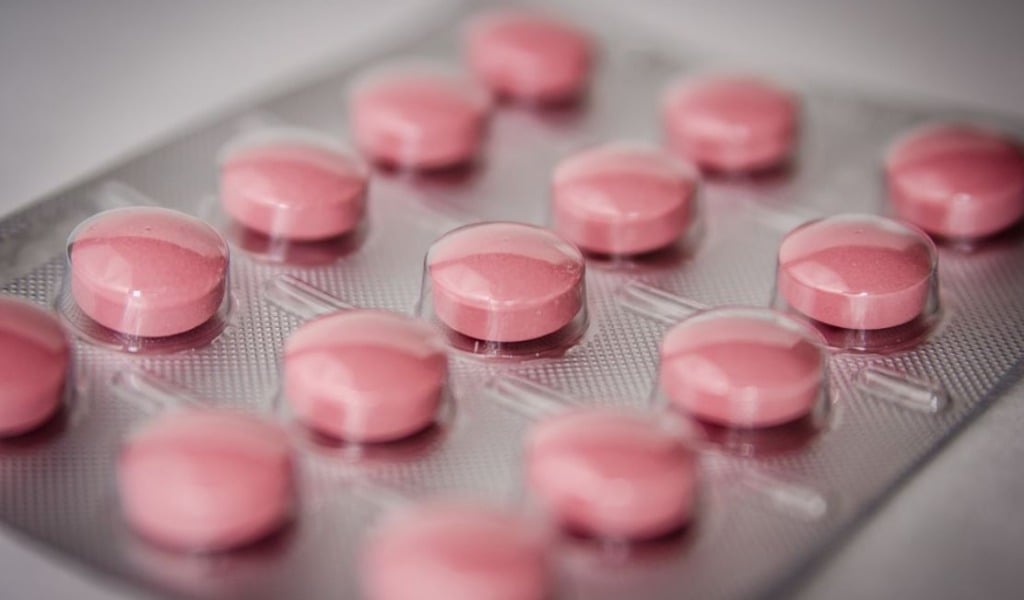Pill Coating With Wire Mesh: How Woven Wire Mesh Benefits the Process
Pharmaceutical drugs in pill form have been a remedy for thousands of years. From basic headache medications to intense anti-bacterial, pharmaceutical pills help keep us healthy.
While their purposes may vary, many pills look the same and have a bitter taste. To resolve this issue, manufacturers began to coat them with a colored sugar coating.
Screen media plays a significant role in the coating process, meaning manufacturers that produce the coating machines must integrate reliable screening material, such as woven wire mesh.
That said, how exactly does woven wire mesh benefit the pill coating process?
W.S. Tyler has been weaving industry-leading wire mesh solutions for over 150 years. We strive to leverage our knowledge and become an extension of your team so the quality of our products meet customer expectation.
With that, we wrote the following article to help you understand how woven wire mesh fits the pill coating process, giving you a better idea of whether or not it's right for you. You will learn:
- What the pill coating process looks like
- The definition of woven wire mesh
- How woven wire mesh is used to coat pills
- How you can integrate woven wire mesh into an existing operation
How Are Pills Coated?
To coat pills, the uncoated pills are first loaded into the coating machine, which utilizes a drum filter. When the machine is initiated, the drum filter beings to rotate, ensuring an even disruption of coating.
To start, a primer coating is applied to allow better adhesion of the primary coating. Once primed, the pills are sprayed with the primary coating, typically colored for identification.
A final wax coating is applied to create a distinct shiny surface on the pill. At this point, air is pumped throughout the system, facilitating the drying process.
What Is Woven Wire Mesh?
Woven wire mesh, or simply wire mesh, is best defined as a network of interwoven wires that features precise pore openings to provide optimal screening. A weaving technique that is heavily monitored is used to weave these wires to form various weave patterns, each with its own set of beneficial qualities.

Now, what makes woven wire mesh so widely popular is its ability to be customized. Including the wire diameter, weave pattern, opening profile, and alloy, virtually every parameter can be customized prior to weaving.
Value-added services like heat treatment, forming, and welding can be applied after the weaving process to ensure the mesh accommodates your process.
How Is Woven Wire Mesh Used for Pill Coating?
As stated above, pills are tumbled within a drum filter to ensure each pill receives an even coating and remains free-flowing throughout the process. These filters are typically outfitted with woven wire mesh as the material is known to maximize the amount of open surface area compared to other materials, such as perforated plate.
After the coating process, the coated pills must be dried before being transferred for shipment. This often involves projecting an airflow throughout the coating machine.
As the air is projected, it enters the drum filter through the openings of the screening media, passes through the pills, and exists through an exhaust system. Because the woven wire mesh is, in fact, considered an open product, the air flows freely and consistently as the drum filter rotates.
For more information regarding the differences between woven wire mesh and perforated plate, refer to the following article:
How Do I Use Woven Wire Mesh if My Drum Filter Use Another Material?
While woven wire mesh provides a more open profile, perforated plate drum filters have historically been a popular solution. That said, what should you do if you decide woven wire mesh is a better fit or if you want to fine-tune the mesh specification you are currently using?
The answer would be to retrofit your existing drum filter(s) with a wire mesh weave that will best enable you to achieve desirable results. This involves safely removing the existing screening media and attaching the new wire mesh specification via welding or another form of adhesion.
Read the article linked below to become more familiar with what this retrofitting process looks like:
Know the Product Before Investing Time and Money
To make pills more tolerable to consume and easier to distinguish, manufacturers coat pills in a colorized sugar coating. To do so, wire mesh drum filters must be used to help facilitate the drying process.
Because there are so many different specifications and variables that go into weaving wire mesh, it is critical that you understand the jargon surrounding the product. This will ensure you are prepared to make the most out of the conversations you will have, resulting in wire mesh solutions that simply work.
W.S. Tyler has been in the wire weaving business for over 150 years and wants to share this experience with you. Allow us to learn your process inside and out so we can help you leverage the capabilities of woven wire mesh and improve the efficiency of your process.
Learn the key woven wire mesh terms in the following article:
About Ronnie Brown
Ronnie is the Content Writer for W.S. Tyler and has four years of experience as a professional writer. He strives to expand his knowledge on all things particle analysis and woven wire mesh to leverage his exceptional writing and graphic design skills, creating a one-of-a-kind experience for customers.




